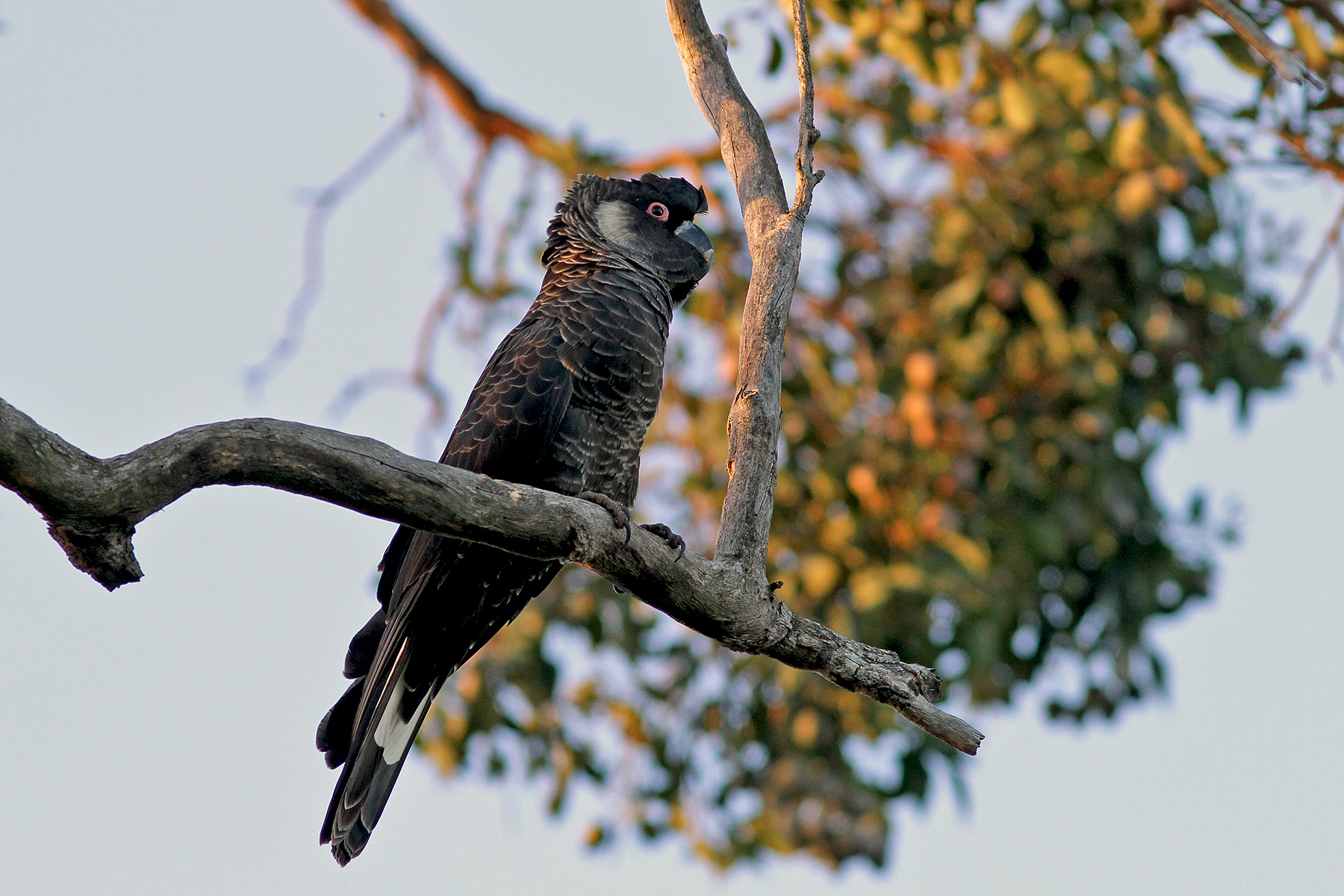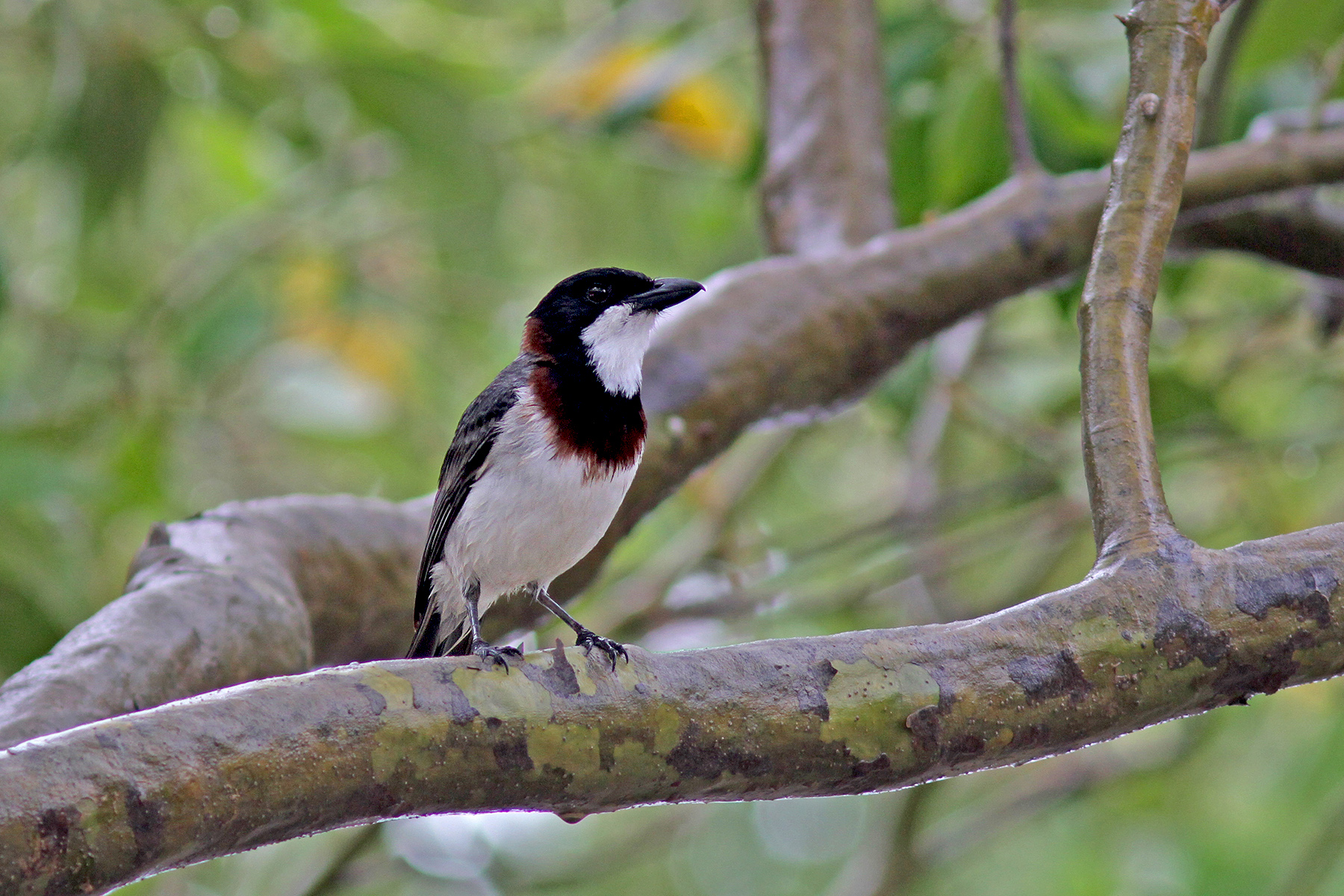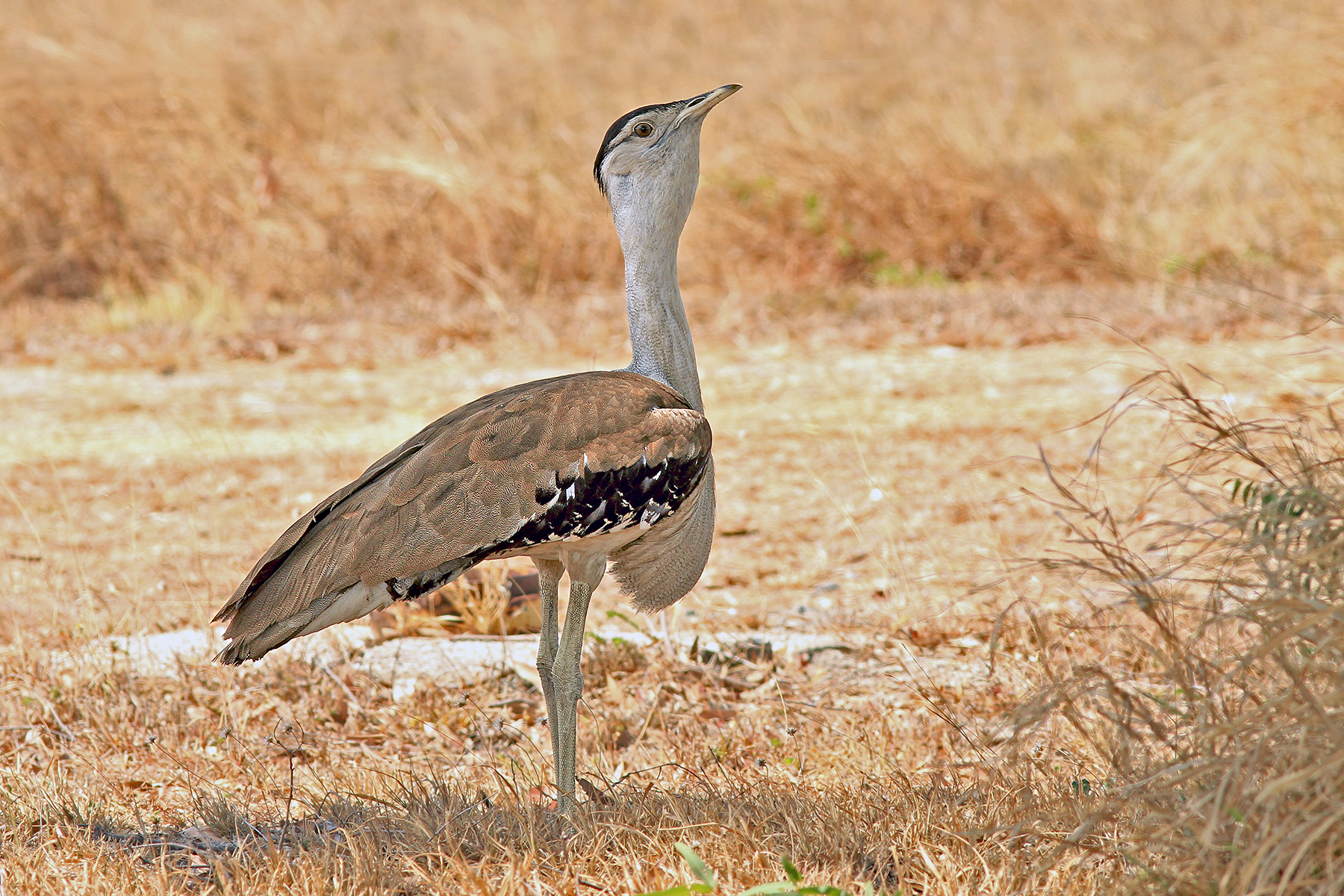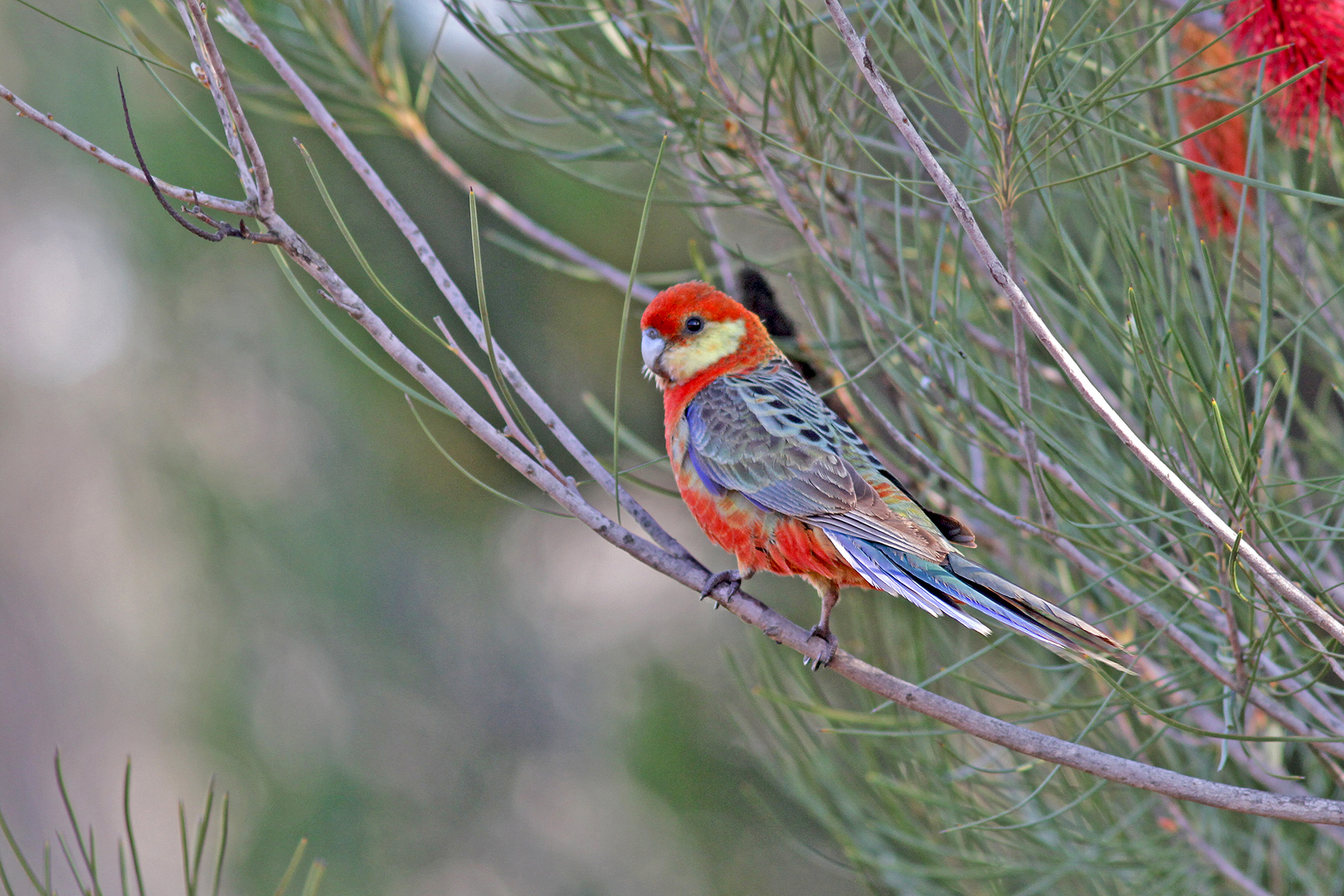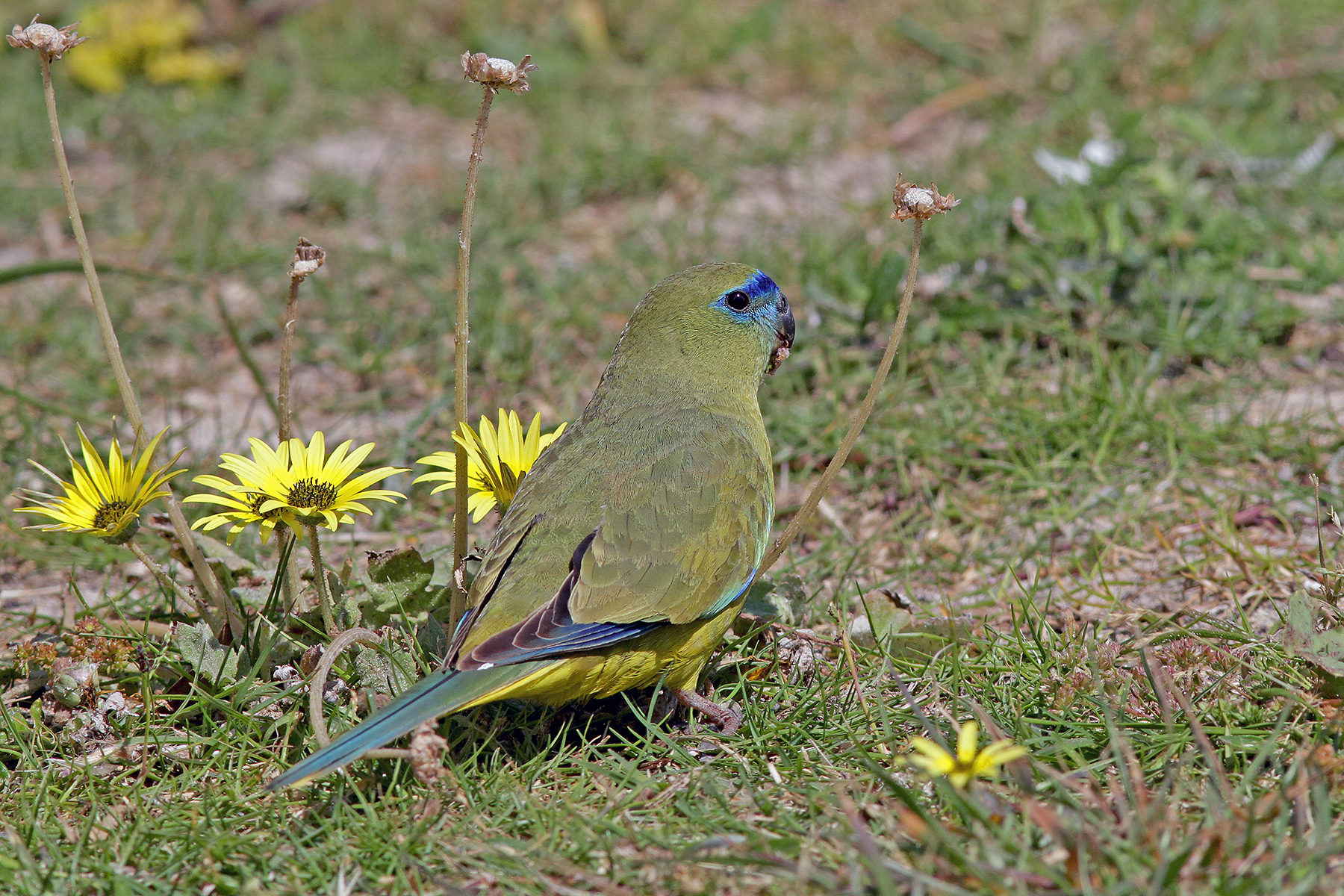WESTERN AUSTRALIA BIRDING TOUR: DETAILED ITINERARY
Western Australia: Day 1 Our Western Australia birding tour begins in the morning at our Perth hotel in the capital of Western Australia.
First, we will visit Lake Monger, where we should find the uncommon Blue-billed Duck as well as Australasian Grebe, Great and Little Black Cormorants, Hardhead, Dusky Moorhen, Australasian Swamphen, Eurasian Coot, introduced Spotted and Laughing Doves, Rainbow Lorikeet (also introduced here), Singing Honeyeater, Australian Reed Warbler and Little Grassbird.
From Perth, we will head south through tall eucalypt forests and farmland to Narrogin for an overnight stay.
We will spend the afternoon at Dryandra State Forest. Dryandra is an attractive area of white-trunked wandoo gums, sheoaks and dryandra bushes where we can expect to see such specialities as Red-capped Parrot, the lovely little Elegant Parrot, Western Rosella, Rufous Treecreeper, the jewel-like Blue-breasted Fairy-wren and Western Yellow Robin. With persistence, we should also flush one or two Painted Button-quails. This is also a good area for observing the localized Square-tailed Kite, although we will need a modicum of luck to see this uncommon species either here or elsewhere in the southwest.
Other species we are likely to see at Dryandra include the impressive Wedge-tailed Eagle, Purple-crowned Lorikeet, Fan-tailed Cuckoo, Southern Boobook, Varied Sittella, Striated Pardalote, Weebill, Inland Thornbill, Red Wattlebird, Yellow-plumed, Brown-headed and Brown Honeyeaters, Western Spinebill, Scarlet and Red-capped Robins, Jacky Winter, Grey Shrike-thrush, the beautiful Common Golden Whistler, Rufous Whistler, Grey Fantail, Restless Flycatcher, Black-faced Cuckoo-shrike, Dusky Woodswallow, Grey Currawong and Australian Raven. Western Grey Kangaroos are common here and if we are fortunate we will come across the rare and endangered Numbat, a most appealing, ground-squirrel-like marsupial.
Western Australia: Day 2 We will spend the morning exploring Dryandra State Forest.
Afterwards, we will continue southwards to the Stirling Range for a two nights stay.
Along the way, we will be looking out for the lovely Regent Parrot, which favours roadside trees in this area. We will also stop at a lake where, unusually for this species, the smart Hooded Plover nests far from the sea, while other species likely at this lake or elsewhere on the journey include Hoary-headed Grebe, White-faced Heron, Black Swan, Australian Shelduck, Pacific Black and Maned (or Australian Wood) Ducks, Grey and Chestnut Teals, the strange Musk Duck, Brown Falcon, Nankeen (or Australian) Kestrel, Red-kneed Dotterel, White-headed Stilt, Red-necked Avocet, Silver Gull, Common Bronzewing, Crested Pigeon, Galah and Pallid Cuckoo, Spiny-cheeked Honeyeater, Willie Wagtail, Magpie-lark, Australian Magpie, Grey Butcherbird and Black-faced Woodswallow.
Western Australia: Day 3 The Stirling Range possesses extensive areas of eucalypt woodland and heathland amongst the rugged hills and is a very scenic place. At this time of year, winter is ending in southwestern Australia and a magnificent array of spring flowers turn the entire southern coastal region into a vast wild garden.
One of the most difficult of Australian birds to see, as opposed to hear, is the Western Whipbird, but we will be doing our best to set eyes on this mega-skulker. Much easier is the huge Carnaby’s (or Short-billed) and Baudin’s (or Long-billed) Black-Cockatoos (which differ largely on bill shape, reflecting their different diets) and Western Thornbill. Here also we have a great stake-out for the extraordinary Australian Owlet-nightjar. With a bit of luck, we will also come across the rare Western Shrike-tit and the tricky Western Fieldwren.
We will visit a private block of mallee scrub to search for the impressive Malleefowl. We can be certain of seeing the huge incubation mounds, but the birds themselves take both patience and luck.
Widespread species we should encounter in this area include Little Eagle, Banded Lapwing, Brush Bronzewing, Horsfield’s Bronze-Cuckoo, the huge Laughing Kookaburra, Splendid Fairywren (which lives up to its name), the diminutive Southern Emu-wren, White-browed Scrubwren, Western Gerygone, Yellow-rumped Thornbill, White-naped, New Holland and Tawny-crowned Honeyeaters, Welcome Swallow, Tree Martin, Australasian Pipit and Silvereye.
Western Australia: Day 4 After spending most of the day birding in the interior, we will travel to Albany on the south coast of Western Australia for a three nights stay.
Western Australia: Days 5-6 Founded in 1826, some two and a half years before the Swan River Colony (Perth) was established, Albany is Western Australia’s oldest settlement and the largest town on the south coast. It enjoys a rather Mediterranean-type climate with hot, dry summers and cool, wet winters. Cheyne Beach and Two Peoples Bay Nature Reserve lie to the east of Albany and these extensive areas of low, dense coastal heathland and grey granite outcrops, which will most likely be covered in wildflowers at the time of our visit, are home to two unique but elusive birds: Noisy Scrub-bird and Western Bristlebird. The Noisy Scrub-bird, which belongs to a family of just two species (the even-harder-to-see Rufous Scrub-bird occurring in eastern Australia), is known only from the Albany area and was thought to be extinct until rediscovered here during the latter half of the 20th century. With persistence, we should be rewarded with views of both of these skulking species.
Other specialities of the southwest include Western Wattlebird, the lovely little Red-winged Fairywren and the handsome Red-eared Firetail.
Additional species that we should find in the Albany region include Australian Pelican, Little Pied Cormorant, Pacific (or White-necked) Heron, Great Egret, Australian White and Straw-necked Ibises, Yellow-billed Spoonbill, Swamp Harrier, Pied and Sooty Oystercatchers, the huge-billed Pacific Gull, Caspian Tern and White-cheeked Honeyeater. Sea-watching here or elsewhere on the south coast can be productive, especially if the wind is onshore, and we may well be able to watch Shy, Black-browed and Indian Yellow-nosed Albatrosses, Sooty Shearwater, Australasian Gannet and Greater Crested Tern.
On one day we will head west to the Pemberton area. En route, we will pass through forests of towering Karri trees with white, grey and salmon-tinted trunks and meadows carpeted in spring wildflowers for which southwestern Australia is famous. We will spend some time in the Lake Muir area, where we should easily find Bare-eyed (or Western) Corella, another uncommon southwestern Australian endemic. Not far from Pemberton we will visit a reliable site for our final southwestern endemic, White-breasted Robin.
Western Australia: Day 7 After some final birding in the Albany region we head northwards to Hyden for an overnight stay. We may have time for a visit to Wave Rock, a striking geological formation close to Hyden that looks like a curling wave.
Western Australia: Day 8 Early this morning we will look for Copperback Quailthrush, as well as Gilbert’s Whistler, in the arid country around McDermid Rock.
Afterwards, we will continue northeastwards to Kookynie, situated to the north of the famous gold-mining city of Kalgoorlie, for an overnight stay. In the Kookynie region, we will be looking for the attractive Western Quailthrush.
Western Australia: Day 9 We will have a further opportunity for birding in the Kookynie region this morning before we head southwestwards to Carrabin, situated in the vast ‘wheat belt’ of Western Australia, for an overnight stay.
Western Australia: Day 10 Today we reach the Indian Ocean coast at the small seaside resort of Lancelin, where we will spend the night. Rock Parrots nest on nearby Lancelin Island and fly over to the mainland to feed, making this a highly reliable site for this sometimes tricky species. Bridled Tern and Brown Noddy can also be found along this stretch of the coast.
Western Australia: Day 11 We may have another opportunity to look for parrots early this morning before we return to Perth and take a midday flight northeastwards to Broome for a two nights stay. This afternoon we will begin our exploration of the Broome area.
Western Australia: Day 12 Broome, situated on the northern coast of Western Australia, is a thriving tropical centre and was once the home of the largest pearling-lugger fleet in the world. Broome is ornithologically most famous for its extraordinary concentrations of Palearctic-breeding shorebirds that spend the austral summer here, but an undistinguished little bird has also lured us to this part of the northwestern Australian coast, and that is the endemic Dusky Gerygone. To find our quarry we shall visit the extensive mangrove stands of the Broome area, where additional mangrove specialities include the gorgeous Red-headed Honeyeater, the striking Mangrove Golden and White-breasted Whistlers, Mangrove Fantail and Broad-billed Flycatcher.
We shall also spend some time around the Royal Australasian Ornithologists Union’s Bird Observatory on Roebuck Bay, which is an outstanding area for birds. This is a wonderful time of year for migratory waders on the extensive tidal mudflats at Roebuck Bay and huge numbers will be busily feeding on the mudflats. As well as thousands of Great Knot, we should find numerous other shorebirds including Grey (or Black-bellied), Pacific Golden, Mongolian, Greater Sand, Red-capped Plovers, Ruddy Turnstone, Eastern Curlew, Eurasian Whimbrel, Black-tailed Godwit (of the eastern form, sometimes split as Eastern Black-tailed Godwit), Bar-tailed Godwit, Grey-tailed Tattler, Common Greenshank, Red Knot, Red-necked Stint, and Common, Terek, Curlew and Broad-billed Sandpipers. We also have a good chance of spotting some Asian Dowitchers.
Other species we should see at Broome, either along the coastline itself or in areas of tropical woodland and dry grassland, include Brown Booby, Little and Pacific (or Eastern) Reef Egrets, Striated Heron, Rufous (or Nankeen) Night Heron, Royal Spoonbill, Plumed Whistling-Duck, Osprey, Black and Brahminy Kites, White-bellied Sea Eagle, Masked Lapwing, Gull-billed, Common, Little and Lesser Crested Terns, Peaceful and Bar-shouldered Doves, Red-winged Parrot, Tawny Frogmouth, Sacred Kingfisher, the lovely Rainbow Bee-eater, Mangrove Gerygone (rather surprisingly, not often residing in mangroves around Broome!), Little Friarbird, the impressive Great Bowerbird, Pied Butcherbird and Torresian Crow.
Western Australia: Day 13 After some final birding around Broome we will drive to Derby and then start out on the famous Gibb River Road into the Kimberley. We will spend the night at Mount Elizabeth Station.
Western Australia: Day 14 We will continue deeper into the Kimberley, to the Drysdale River, for a two nights stay.
Travelling through this spectacularly scenic region, one of the wildest and most celebrated upland areas in Australia, is an experience all of its own. We will make some stops today for the very attractive but rare and endangered (through overgrazing by livestock) Purple-crowned Fairy-wren and for the splendid Gouldian Finch. The latter is a rare and nomadic species, so we will probably have to check plenty of roadside finch flocks in order to have a good chance of finding our prize.
Western Australia: Day 15 We will set off very early this morning and drive to the start of the trail to Mitchell Falls on the remote Mitchell Plateau. Our target here is the elusive Black Grasswren, which likes to play hide and seek with visiting birders amongst the much-eroded limestone terrain, interspersed with thorny spinifex bushes. We will hope to spot this stunning little bird from the trail, but if not those who are willing can try to penetrate further into this difficult habitat. We have a good chance of seeing this most sought-after of all the grasswrens, but we cannot be sure of success.
We will also be looking out for the yellow-faced form of the Partridge Pigeon (restricted to the Kimberley, and a potential split), White-quilled Rock-Pigeon (endemic to northwestern Australia), Variegated Fairy-wren, Kimberley Honeyeater (a Kimberley endemic), Bar-breasted Honeyeater, Leaden Flycatcher and Silver-backed Butcherbird.
Western Australia: Day 16 After some final birding in the Kimberley we will continue eastwards to Kununurra for a three nights stay. Kununurra is situated not far from the border between Western Australia and the Northern Territory.
Western Australia: Days 17-18 Situated in the heart of the Ord River irrigation district, the Kununurra region possesses a rich abundance of birdlife and some wonderful specialities. A drive through the agricultural research station fields will provide us with an opportunity to observe a staggering array of birds. Huge numbers of Magpie Geese feed along the edges of the irrigation channels, while Brolgas, large flocks of Little Corellas and Australian Pratincoles feed amongst the stubble fields and flocks of finches infest the seeding grasses. Chestnut-breasted Manikins, and Double-barred, Long-tailed, Masked, Crimson and Star Finches generally make up the flocks, but the localized Yellow-rumped Mannikin can regularly be found amongst them.
Out in the dry bush country, we have a good chance of finding the rare Pictorella Mannikin, as well as the enormous Red-tailed Black-Cockatoo.
As we take a morning boat trip on Lake Argyle, we will watch Pied Cormorants perching on drowned trees and Comb-crested Jacanas striding across the lily pads. The reed-fringed edges of the lake sometimes harbour Baillon’s and White-browed Crakes, while rocky areas are home to Sandstone Shrike-thrush and Short-eared Rock Wallaby. We will stop to explore a grassy island where we shall be looking out in particular for one of Australia’s rarest birds, Yellow Chat, which is often present in good numbers. The muddy margins of the island often hold Long-toed Stint, and both Wood and Marsh Sandpipers, while the shorter areas of grass are favoured by the elegant and much sought-after Oriental Plover and the equally interesting Little Curlew.
Amongst the many other waterbirds, we should see at Lake Argyle are Australasian Darter, the handsome Pied Heron, Intermediate Egret, Glossy Ibis, the impressive Black-necked Stork, Wandering Whistling-Duck, Radjah Shelduck, the lovely Green Pygmy-goose and Whiskered Tern.
Lake Argyle is also one of the best localities in Australia to observe the stunningly plumaged Spinifex Pigeon, so we should enjoy great views of these cryptically-coloured, plump little birds which emerge from the spinifex-covered hills to look for scraps of food around camping areas and the like.
Additional species likely around Kununurra include Black-shouldered Kite (a different species from the Black-winged Kite of the Old World), Whistling Kite, the handsome Spotted Harrier, Collared Sparrowhawk, Black Falcon, Australian Hobby, Bush Thick-knee, Black-fronted Plover, Brush Cuckoo, Pheasant Coucal, the huge Blue-winged Kookaburra, Dollarbird, Red-backed Fairy-wren, Silver-crowned Friarbird, Blue-faced, White-gaped, Yellow-tinted, White-throated and Rufous-throated Honeyeaters, Yellow-throated Miner, Northern Fantail, Paperbark Flycatcher, Grey-crowned Babbler, Olive-backed and Yellow Orioles, White-bellied Cuckoo-shrike, White-winged Triller, White-breasted Woodswallow, Horsfield’s Bushlark, Fairy Martin, Golden-headed Cisticola, Zebra Finch and Mistletoebird.
Western Australia: Day 19 After some final birding around Kununurra, our Western Australia birding tour ends this morning at the airport.
CHRISTMAS ISLAND EXTENSION
Christmas Island: Day 1 Our Christmas Island birding tour extension will begin around midday at Perth airport, from where we will take an afternoon flight to Christmas Island, an Australian territory situated about 300 km south of the western end of Java and over 2700 km north-northwest of Perth, for a three nights stay. Our hotel is pleasantly situated along the island’s coastline. We may arrive in time for some initial exploration.
Christmas Island: Days 2-3 Christmas Island is the emergent summit of an underwater mountain, rising 1180ft (360m) above the Indian Ocean in a series of steep cliffs and wave-cut terraces to a central plateau. It is an isolated oceanic island, where the birds are few but incredibly tame. The island is covered in a dense rainforest where ferns, orchids and vines flourish in the humid atmosphere beneath the canopy of giant trees up to 160ft (50m) high.
The superstructure of the island is limestone and millions of years ago phosphate was deposited between the limestone pinnacles resulting in valuable commercial deposits of calcium phosphate. Mining started in the 1880s and resulted in the felling of about 30% of the rainforest. The exploitation of the phosphate has now almost stopped and almost two-thirds of the 52 square miles (135 square kilometres) island is protected area.
Christmas Island is known worldwide as being the only breeding haunt for two species of seabirds: Abbott’s Booby and Christmas Island Frigatebird. The Abbott’s Booby, the rarest of the nine species of gannets and boobies, used to be more widespread in the Indian Ocean but is now restricted as a breeding species to Christmas Island and numbers about 3000 pairs. It requires tall rainforest trees for nesting and it certainly is a weird experience to find a truly pelagic seabird sitting on its nest 100ft (30m) or more high in the middle of the rainforest! Even more strange is the decidedly prehistoric appearance of Abbott’s Booby, which has a flight silhouette and wing action very unlike that of other boobies. The Christmas Island Frigatebird, which breeds only here but wanders more widely, is the rarest of the five species of frigatebirds and the population numbers about 1600 pairs. They nest in three separate colonies in the northern part of the island. We should be able to witness the impressive courtship with males inflating their scarlet gular pouches and emitting crazy whistles trying to attract seemingly uninterested females.
The remarkable Golden Tropicbirds of Christmas Island have a beautiful deep golden hue rather than pure white plumage and are called ‘Golden Bosunbirds’ by the locals. Some people consider this unique endemic form fulvus (which likely represents a distinct endemic species, rather than a race or morph of White-tailed Tropicbird) to be the most attractive seabird in the world. They are marvellously common and often perform their spectacular display flights over the settlement. Smaller numbers of immaculate Red-tailed Tropicbirds breed in the same area.
Red-footed Boobies (white phase birds only) perch low in trees and bushes, whilst Brown Boobies prefer the open areas near the shore. Both Boobies are often harassed by Great Frigatebirds trying to steal their fish. A few Lesser Frigatebirds also breed on the island, so this is a great spot to study the very complex plumages of the three species. The only other seabird that breeds on the island is the Brown Noddy.
Christmas Island also harbours four endemic landbirds and a number of endemic races of more widespread species. The cooing of the endemic Christmas Island Imperial Pigeon can be heard all over, as this substantial purple-grey bird is still a regular sight in the rainforest. Easily the most commonly encountered bird is the endemic Christmas Island White-eye. Small flocks of these unobtrusively-coloured birds roam the forest and the gardens. At night we will search for the endemic Christmas Island Boobook (or Christmas Island Hawk-Owl), which is surprisingly common. Good numbers of Christmas Island Swiftlets Swiftlets hawk over the forest. In addition, the widespread Island Thrush is represented here by a beautiful orange-flanked race that, most unusually, occurs at sea level. This form may well represent a distinct species; Christmas Island Thrush.
Emerald Doves (or Green-winged Pigeons) rummage in the woodland leaf litter. The Nankeen (or Australian) Kestrel colonized the island in the 1940s and is regularly observed hovering over the more open areas, where White-faced Herons can also be encountered, while Christmas Island Goshawks favour forest edges. (The latter is now often treated as a full species rather than being lumped with Variable Goshawk or, more bizarrely, with Brown Goshawk.)
Along the shoreline, we should find foraging Pacific Reef Egrets and maybe a migrant Eurasian Whimbrel or Ruddy Turnstone. Since the 1980s Eurasian Tree Sparrows have established themselves in the village and small numbers of introduced Java Sparrows favour chicken coops and fallow ground. White-breasted Waterhens are the most recent colonists on the island.
Huge Large Flying Foxes ravage the fruiting trees, but the most famous inhabitants of Christmas Island are the crabs. Incredible numbers of Red Crabs inhabit the forest floor and in the early wet season (later in the year than we visit) a staggering 120 million of these dinner plate-sized creatures migrate from the plateau to the ocean in preparation for the mating season. Huge blue-coloured Robber Crabs (weighing up to several pounds each) can sometimes be found eating fruits high in palm trees and eleven more species of crab make a living here.
Christmas Island: Day 4 After some final birding on Christmas Island we will take a flight back to Perth on the Australian mainland, where we will overnight.
Christmas Island: Day 5 Our Christmas Island birding tour extension ends this morning at our Perth hotel, and our Western Australia tour starts.






